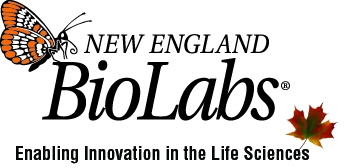Team:Guelph/Team
From 2008.igem.org
(Difference between revisions)
| Line 21: | Line 21: | ||
{|align="justify" | {|align="justify" | ||
| - | |You can write a background of your team, members, etc or | + | |You can write a background of your team, members, etc or something else that might be interesting. |
|[[Image:DB_Guelph_iGEM_Logo.jpg|250px]] | |[[Image:DB_Guelph_iGEM_Logo.jpg|250px]] | ||
|- | |- | ||
| - | | | + | |} |
{|align="justify" | {|align="justify" | ||
|Microbes are found in every nook and cranny of the entire planet, and multicellular organisms are no exception. |Plants and animals are found to contain huge numbers of bacteria and fungi that help with nutrient absorption, produce beneficial compounds, fight off pathogens, or often are even pathogens themselves. We are interested in taking advantage of some of these microbes to deliver transgenic payloads for the benefit or modification of the host organism. These might be called GM endosymbionts. On the human side, we would like to introduce the carotendoid metabolic genes from a well studied soil microbe called Erwinia urodevora into human probiotic microbes which will survive and colonize the intestine for stable production of the essential human nutrient, pro-vitamin A. Time permitting, we will attempt to enhance carotenoid accumulation by increasing plasma membrane sink by overexpression of the fumarate reductase operon. Millions of humans suffer from vitamin A deficiencies across the world, resulting in blindness and death which could be mitigated by symbitic production of this important vitamin. We will also attempt to get corn endosymbionts to produce pro-vitamin A; a function usually performed by the plant itself. | |Microbes are found in every nook and cranny of the entire planet, and multicellular organisms are no exception. |Plants and animals are found to contain huge numbers of bacteria and fungi that help with nutrient absorption, produce beneficial compounds, fight off pathogens, or often are even pathogens themselves. We are interested in taking advantage of some of these microbes to deliver transgenic payloads for the benefit or modification of the host organism. These might be called GM endosymbionts. On the human side, we would like to introduce the carotendoid metabolic genes from a well studied soil microbe called Erwinia urodevora into human probiotic microbes which will survive and colonize the intestine for stable production of the essential human nutrient, pro-vitamin A. Time permitting, we will attempt to enhance carotenoid accumulation by increasing plasma membrane sink by overexpression of the fumarate reductase operon. Millions of humans suffer from vitamin A deficiencies across the world, resulting in blindness and death which could be mitigated by symbitic production of this important vitamin. We will also attempt to get corn endosymbionts to produce pro-vitamin A; a function usually performed by the plant itself. | ||
Revision as of 01:10, 2 August 2008
| Home | The Team | The Project | Parts | Notebook | Modeling | Links |
|---|
 "
"















